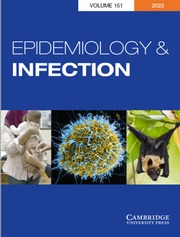Article contents
The epidemiology of Q fever
Published online by Cambridge University Press: 15 May 2009
Extract
In seven years 176 cases of Q fever have been diagnosed in Queensland. Nearly all the 129 patients who lived in Brisbane were associated with meat works. Most of the forty-seven country patients worked on dairy farms.
Investigation of native animals, cattle and ticks, has indicated in outline the natural history of Q fever, which is set out diagrammatically in Fig. 1. (Several steps in this outline need confirmation and much detail remains to be filled in.)
First there is a basic cycle of infection with the bandicoot (and probably other bush animals) as reservoir, and Haemaphysalis humerosa (and probably Ixodes holocyclus) as vector. A bush worker may interrupt this cycle and get Q fever from the attack of Ixodes holocyclus.
Cattle become infected, probably through Ixodes holocyclus and perhaps through other ticks. It is possible that there is a secondary cycle: cattle-Haemaphysalis bispinosa-cattle.
Ticks on the cattle (Boophilus annulatus microplus or Haemaphysalis bispinosa) are probably the source of human infection. It is suggested that inhalation of tick faeces is the likely mode of entry of Rickettsia burneti.
- Type
- Research Article
- Information
- Copyright
- Copyright © Cambridge University Press 1944
References
REFERENCES
- 43
- Cited by


